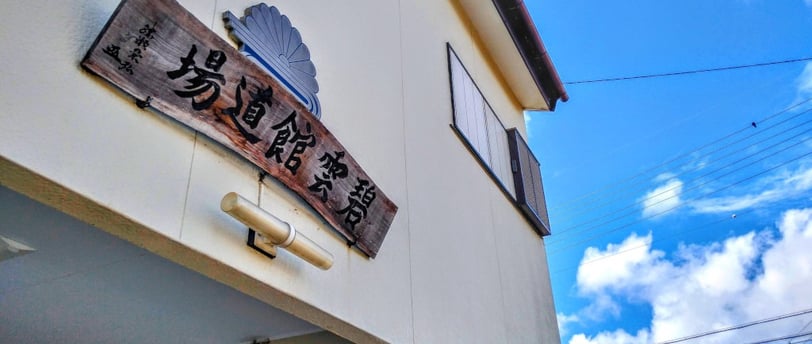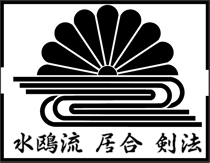History of SuiO Ryu
"The essence of our tradition, and the attainment of an unassailable position, comes from cutting down our opponents while the sword is still in the scabbard, stifling our opponent's actions and achieving victory through not drawing the sword. While engaged in combat, detach yourself from all thoughts of winning or losing, achieve a pure and unfettered mind, and reach unification with the universe." — Mima Yoichizaemon Kagenobu (1577–1665), founder of Suiō-ryū Iai Kenpō
5/8/20243 min read


Suiō-ryū Iai Kenpō was founded around the year 1615 by Mima Yoichizaemon Kagenobu (1577–1665), the son of a Shinto priest from the Dewa domain. In his youth, Yoichizaemon studied the kenjutsu tradition Bokuden-ryū, founded by Tsukahara Bokuden, as well as a form of jōjutsu (medium staff techniques) practiced by the mountain warrior monks known as yamabushi, called Kongō Jō Jōhō.
His life changed at the age of 18, after participating in a friendly duel with a family friend renowned for his martial ability. This opponent was a student of Hayashizaki Jinsuke Shigenobu (1559–1604), considered the main precursor of iaijutsu. During the duel, Yoichizaemon assumed a high guard while his opponent remained still, sword still sheathed. As he moved forward to close the distance, the opponent drew suddenly and executed an upward cut, stopping the blade just short of Yoichizaemon’s face. Deeply impressed by this display of control and precision, Yoichizaemon resolved to dedicate himself to the study and development of his own iai system.
Following this event, he studied under that same opponent and later undertook a musha shugyō, a martial pilgrimage throughout Japan to test his skills against practitioners of other schools. During this period, he also learned a system of naginatajutsu from a group of sōhei (warrior monks) fleeing Mount Hiei after the destruction of their temple by Oda Nobunaga.
After twenty years of travel and training, he founded his own school: Suiō-ryū Iai Kenpō. The name "Suiō" (水鷗), composed of the characters for “water” and “seagull,” was inspired by the graceful flight of seagulls over water, which deeply moved him. At the age of 67, Yoichizaemon retired from active teaching and passed the responsibility to his son and successor, Yōhachirō. Since then, the school’s transmission has continued unbroken from one generation to the next through the figure of the sōke (headmaster), entrusted with preserving and transmitting the tradition.
The 9th sōke, Fukuhara Shinzaemon Kagenori, was also a student of Masaki Tarō Dayū Toshimitsu, founder of the Masaki-ryū system of manrikigusari (a chain with weights at both ends). Shinzaemon incorporated these teachings, adding a kama (sickle) to the chain and developing his own style: Masaki-ryū Fukuhara-ha Kusarigamajutsu, which has since been practiced alongside the techniques of Suiō-ryū.
The school was introduced to the Katsuse family by the 13th sōke, Mizuma Hanbei Kagetsugu, who stayed at an inn in the city of Hamamatsu (Shizuoka Prefecture) operated by the family. There, he met a young man named Katsuse Mitsuyasu, in whom he saw great potential, and offered to train him. Years later, in 1930, Mitsuyasu received the official documents and seals of transmission, formally recognizing him as the 14th sōke of Suiō-ryū and 11th sōke of Masaki-ryū.
Mitsuyasu also distinguished himself in modern budō, attaining high ranks in kendō, iaidō, and jōdō, and was a close associate of Nakayama Hakudō, a legendary figure of 20th-century budō known as the “Sword Saint of the Shōwa Era” (Shōwa no Kensei). Nakayama provided the name and calligraphy for the school’s current headquarters dōjō, the Hekiunkan (“Hall of the Blue Cloud”).
At the time of his passing at age 88, Katsuse Mitsuyasu Kagemasa held the ranks of 8th dan hanshi in kendō and iaidō, and 7th dan kyōshi in jōdō. His son, Katsuse Yoshimitsu Kagehiro, continues the tradition today as the 15th sōke of Suiō-ryū and 12th sōke of Masaki-ryū, holding 7th dan kyōshi in kendō and iaidō, and 6th dan renshii in jōdō. Under his guidance, the school maintains official practice groups outside of Japan, all of which train in the traditional manner and under his direct supervision.
For more information about the history of this school, you can refer to the article: Classical Warrior Traditions of Japan, Part 6 – Suiō-ryū Iai Kenpō (original in English)
Sui O Ryu® y otros derivados del nombre están registrados. No está permitido su uso sin autorización.
